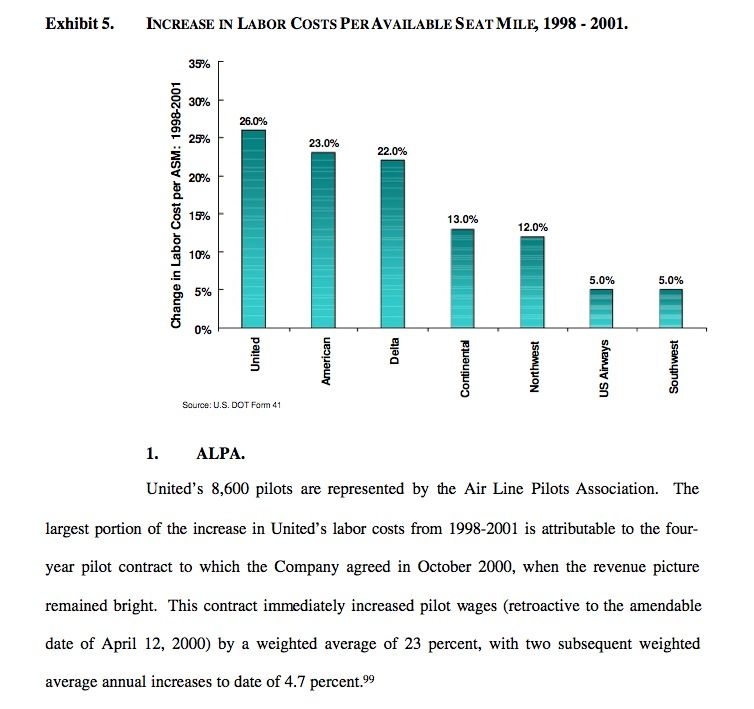So as a student of history, I've been inspired to investigate the history of Scope, but here was my starting point, and this is taken from the bankruptcy proceedings for UAL. It was part of the corporations presentation explaining why they needed relief from the UAL Scope clause. Does anybody have a copy of the CAL Scope clause from 2000? Did they allow unlimited 50 seaters at that time? Please keep in mind that the contract was abrogated at the behest of the bankruptcy judge with no vote from the pilots. It appears that at the time UAL was holding the line against RJs but others undercut them to gain advantage.
Just wondering who fired the first shot.
Despite the enormous revenue potential, several provisions in Unitedís pilot contract restrict the Companyís ability to use RJs:
- United cannot fly RJs with more than 50 seats. (ALPA CBA 1-B-2, 1-M-12, 1-M-28)
- To operate RJs at all, United must maintain at least 451 larger aircraft (ALPA CBA 1-C-1-f-(1)) The Company may operate more than 65 RJs only if it also maintains a fleet of 595 larger aircraft. (Id. at 1-C-1-f-(2))
- The number of available seat miles that United can schedule for RJs is limited to a percentage of the available seat miles scheduled for Unitedís larger aircraft, which varies depending on the number of RJs. (Id.at 1-C-1-d; 1-M-14)
- Ninety percent of RJsí non-stop flights must arrive or depart from a specified list of airports, most of which are Unitedís hubs or other major stations. (Id.at 1-C-1-b) RJs cannot fly direct routes between many of these same airports. (Id.at 1-C-1-a-(1), 1-M-17)
- United cannot reduce its number of pilots below 9592 as a result of RJs.( Id.at 1-C-1-g)
The cumulative effect of these and other limitations is that United presently receives only a fraction of the potential direct revenue and increased feed available from RJs. Moreover, Unitedís ability to weather economic downturns is hindered by the contractís limitations on Unitedís ability to use RJs on routes between major airports. These labor contract restrictions decrease Unitedís profitability and place United at a competitive disadvantage Ė
particularly with respect to Delta and Continental, which enjoy much greater leeway in deploying RJs as part of their networks.
